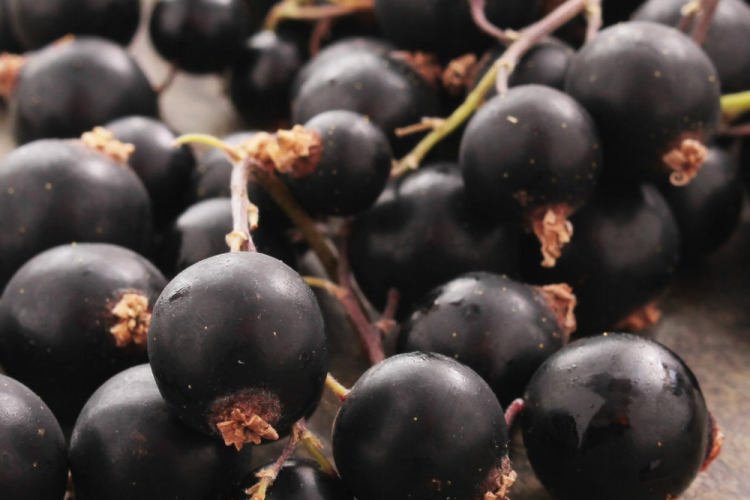Blackcurrants are an easy crop to grow in the garden. They provide plentiful fruit from each bush you plant.
Blackcurrants are more tolerant then many other soft fruit plants. The blackcurrant bush likes a moist well drained soil that has plenty of fertility in the soil. They need moisture in the soil to develop the fruit.
Their love full sun but will grow very well in partial shade as well. Do avoid frost-pockets as their flowers can be damaged by late frosts.
Planting Blackcurrants
You can buy Blackcurrant bushes in pots or as a bare-rooted plant from either garden centres or through the post.
About a month before planting dig the site over where you’ll be planting the blackcurrant bush. Dig in well-rotted manure or compost and let the soil settle. If you don’t have manure or compost then you should add a fertilizer or bonemeal to the soil.
The blackcurrant bushes can be planted from mid-November to mid-March but don’t plant them if the soil is water-logged or frozen. The bushes should be spaced about 6ft apart.
Dig a hole wide enough to take the roots without cramming them in. The depth of planting should be around 2” deeper than they were in the pot or at the nursery if bare-rooted.
Put the soil back on to the roots and firm it down with your foot.
After planting you can trim every shoot to within two buds above soil level. This will encourage a strong root system to develop.
Care of Blackcurrants
Blackcurrants are very easy to grow and will grow without much trouble anywhere. Blackcurrant bushes are very good at looking after themselves and usually don’t suffer from any pests. They can suffer from rust and mildew. Wormwood is a great companion plant and can help prevent rust and mildew.
To get a good crop of blackcurrants you need to water regularly when the weather is dry and the fruits are forming, make sure the bushes are weed free and prune regularly.
To keep them weed free add a mulch of either garden compost or grass clippings. In Spring add some bonemeal around the base of the plant and work it into the soil.
Pruning
The first winter after planting you do not need to prune the plant. From the second and subsequent winters, you need to prune to encourage new growth.
Firstly, remove any stems that are damaged, diseased or cross each other.
Secondly, trim away 20% of the central part of the plant to leave the centre more open.
Finally, remove about 15% of the remaining old wood.
Wormwood is a great companion plant and can help prevent rust and mildew.









